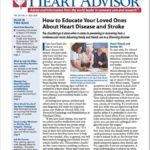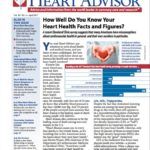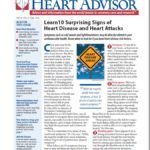Download The Full July 2017 Issue PDF
A blood clot that gets lodged in your lungs - a condition known as a pulmonary embolism - typically starts out in your leg before traveling up into your heart and then your lungs. In the legs, this clot is called a deepvein thrombosis, and it can develop quickly. The complications that can stem from a pulmonary embolism (PE) include damage to the affected lung, low oxygen levels in the blood, and damage to other organs that dont receive enough oxygen.
Download the Full June 2017 Issue PDF
Stroke is among the leading causes of death in the U.S., but it is still a misunderstood health condition. Plenty of myths and misguided ideas surround stroke, from its causes and symptoms to its potential severity and the particulars of recovery. To help clear up some misunderstandings, Efrain Salgado, MD, director of the Cleveland Clinic Florida Stroke Center and Neurosonology Laboratory, explains the truth about 10 common stroke myths
Download the Full May 2017 Issue PDF
If you have heart disease or even just heart disease risk factors, you have probably been told that you and your healthcare providers are part of a team. But that leaves out some pretty important teammates: your family and friends. Whether its helping you adjust to a more heart-healthy lifestyle or knowing the warning signs and how to respond to a heart attack or stroke, your loved ones can have a significant impact on your physical and emotional health in the years ahead.
Download the Full April 2017 Issue PDF
For too many people, a heart attack is their first clue that they have heart disease. Or for people who perhaps knew they had risk factors for heart disease but didnt realize how serious their condition was, symptoms of a heart attack serve as late wake-up call that prevention should have been a higher priority.Chances are, if youre reading this article, youve already been diagnosed with some kind of heart disease. If so, hopefully youre working with your doctor on controlling your manageable risk factors and taking other preventive steps to lower your odds of a heart attack or stroke.
Download the Full March 2017 Issue PDF
A diagnosis of coronary heart disease can be emotionally devastating, especially if CHD is discovered after a heart attack. Its quite common for someone to become anxious or depressed after a heart attack or after a procedure, such as coronary artery bypass grafting (CABG) or stenting to open a blocked artery. If you start having feelings of hopelessness or excessive worry, or you find yourself withdrawing from friends, families and activities you once enjoyed, share your feelings with your doctor.
Download the Full February 2017 Issue PDF
There are other very typical symptoms of a heart attack that have nothing to do with chest pain or pressure. These are signs that may or may not appear with chest discomfort. Along with chest pressure, significant shortness of breath and nausea are also common in many heart attacks, Dr. Cho says. Shortness of breath, also called dyspnea, is often felt before any chest pain. You may find yourself unable to take a deep breath, or you may feel like you cant catch your breath. You may pant or take rapid breaths, trying to fill your lungs.
Download the Full January 2017 Issue PDF
That advice goes for cooking oils and everything in your diet. Portion control and moderation are key.When establishing a heart-healthy eating plan, pay close attention to saturated fat and trans fat content, calories, added sugars, sodium and additives such as nitrates and phosphates. Reducing your intake of these potentially harmful items can help boost your odds of preserving the health of your heart and your overall physical well-being.
Download the Full December 2016 Issue PDF
He adds that since the test subjects were younger and healthier than most heart patients, and that the exercise was done on a treadmill, its not certain that similar accuracy issues would be the case for older adults and for other activities. However, the researchers did stress that if you are advised to wear a heart rate monitor because of concerns about your heart health, you should strongly consider a chest monitor. You should also take the monitor to your doctors office or, perhaps to a cardiac rehab specialist, to make sure its working properly and that you know how to use it and read theresults.
Download the Full November 2016 Issue PDF
A patient deemed inoperable still may not be a good TAVR candidate, unfortunately. Arteries that are too small to accommodate a catheter safely, for example, may eliminate TAVR as an option. Dr. Mick notes, however, that recently approved TAVR valves are smaller than earlier generations of the device, meaning more patients may be good candidates. And even if TAVR appears to be a safe choice, open surgery may still be necessary.
Download the Full September 2016 Issue PDF
Research suggests that, on average, Americans consume about 3,400 mg of sodium daily, which is almost 50 percent more than the recommended limit of 2,300 mg. Because most of that sodium is found in processed and restaurant foods, as opposed to the salt shaker, the FDA is focusing its efforts on the food industry. The agency is accepting public comment on its goals. You can share your thoughts with the FDA on its website. Short-term goals call for daily average consumption to reach 3,000 mg in two years and 2,300 mg in 10 years.
Download the Full August Issue PDF
One of the other differences youll notice is in the listing of vitamins, minerals and other nutrients. Calcium and iron will still be listed, but they will be joined by potassium and vitamin D. Vitamins A and C will no longer be required, but may be added voluntarily by the manufacturer. Deficiencies in vitamins A and C are rare, but research suggests that vitamin D and potassium are very important to general nutrition, but that many people dont get enough of them.













